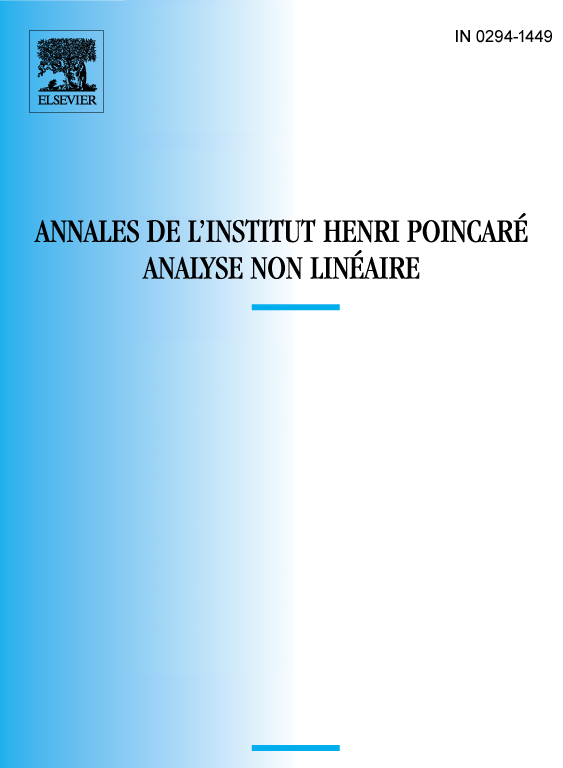Concentration of low energy extremals
M. Flucher
GFAI AG, Banking systems, Gludz-Blotzheimerstr. 1, CH-4503 Solothurn, SwitzerlandS. Müller
Max-Planck Institut für Mathematik in den Naturwissenschaften, Inselstr. 22-26, D-04103 Leipzig, Germany

Abstract
We study variational problems of the form
with small and on a domain of dimension . The corresponding Euler Lagrange equation is a semilinear Dirichlet problem
with and a large Lagrange multiplier . Our goal is to obtain qualitative information on the extremals for small . The integrand can be nonconvex and discontinuous. Thus our results apply to nonlinear eigenvalue problems as well as to certain free-boundary problems.
Our starting point is a generalized Sobolev inequality that covers the classical Sobolev inequality and the isoperimetric inequality relating capacity and volume as special cases. Using a local version of this inequality we prove a generalized concentration-compactness alternative and show that as the extremals concentrate at a single point. The local behaviour of the extremals near the concentration point depends only on . On a microscopic scale they tend to an extremal for the generalized Sobolev constant on provided that satisfies certain growth conditions at 0 and infinity.
Résumé
Nous étudions des problèmes variationnels
où est petit et et est un domaine de dimension . L'équation d'Euler–Lagrange correspondante est un problème de Dirichlet semilinéaire
où et est un multiplicateur de Lagrange grand. Notre objectif est d'obtenir des informations qualitatives concernant les solutions extrémales pour petit. La fonction peut être non convexe et discontinue.
Nos résultats s'appliquent par conséquent à des problèmes aux valeurs propres non linéaires et à certains problèmes à frontière libre. Notre point de départ est une inégalité de Sobolev généralisée qui contient l'inégalité de Sobolev classique et l'inégalité isopérimétrique qui relie la capacité et le volume. En utilisant une version locale de cette inégalité nous démontrons une version généralisée de l'alternative concentration-compacitée de Lions et nous montrons que les solutions extrémales se concentrent en un seul point lorsque . Le comportement local de ces solutions extrémales au voisinage du point de concentration dépend uniquement de . A une échelle microscopique elle tend vers la solution extrémale de la constante de Sobolev généralisée dans à condition que vérifie certaines conditions d'accroissement en zéro et à l'infini.
Cite this article
M. Flucher, S. Müller, Concentration of low energy extremals. Ann. Inst. H. Poincaré Anal. Non Linéaire 16 (1999), no. 3, pp. 269–298
DOI 10.1016/S0294-1449(99)80015-8